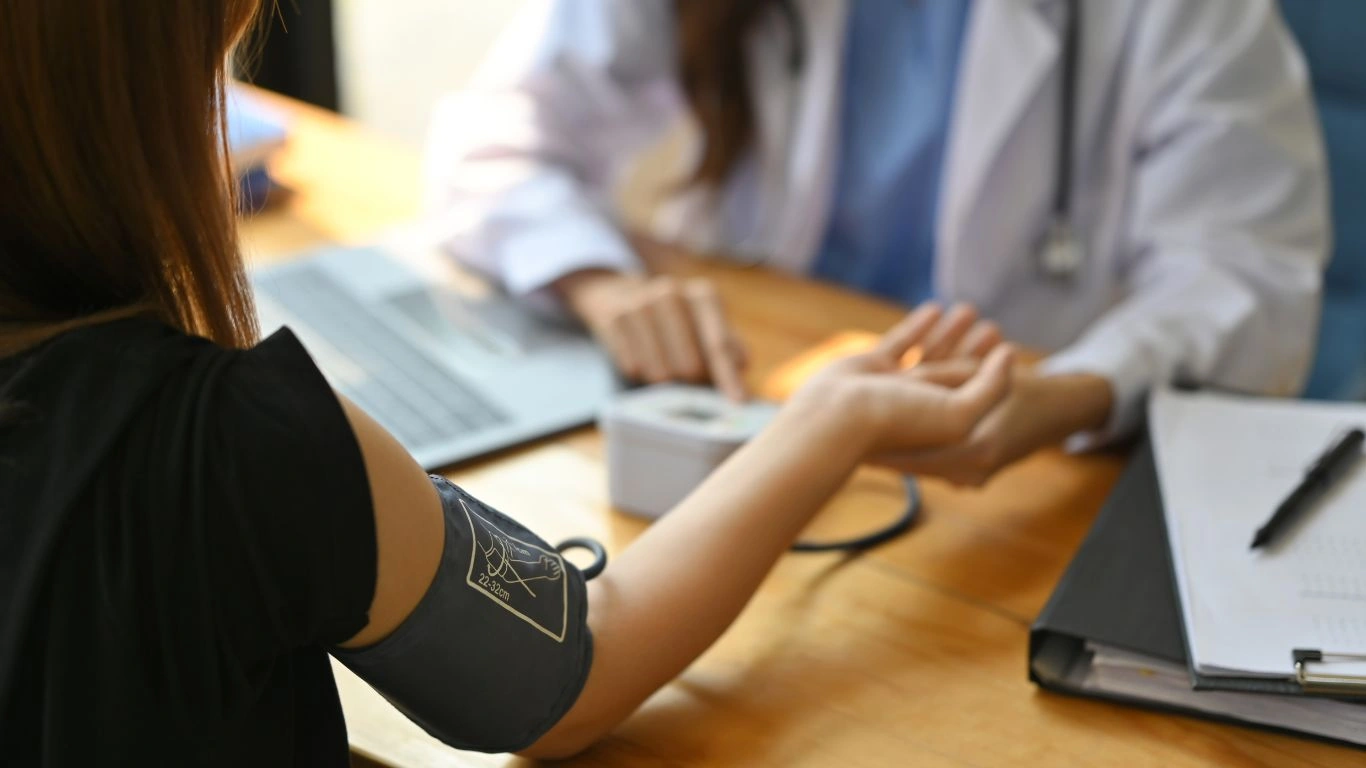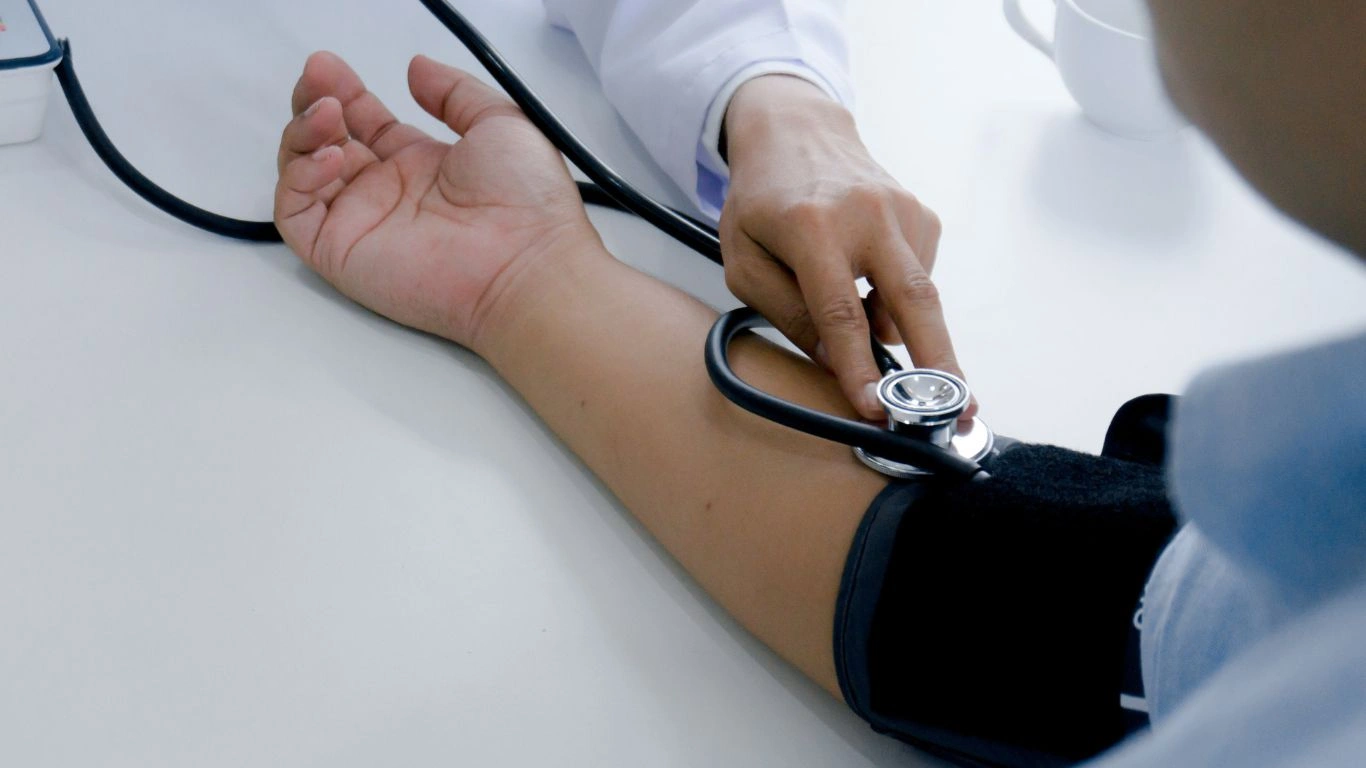The DASH Diet: Powerful Foods to Eat & Avoid for Better Heart Health
If you’ve ever Googled “how to lower blood pressure naturally,” chances are you’ve come across the DASH diet. And trust me, as someone who’s spent years helping people manage hypertension, I can tell you—this isn’t just another trendy diet. The DASH diet (Dietary Approaches to Stop Hypertension) is science-backed, recommended by experts, and most importantly, it works. But what exactly should you eat—and avoid—to reap its benefits? Let’s break it down.
The DASH Diet: What to Eat and Avoid

Before we dive into the specifics, let’s get one thing straight—the DASH diet isn’t about starving yourself or eliminating entire food groups. It’s about balance. This eating plan is rich in whole foods, heart-friendly nutrients, and delicious meals that won’t leave you feeling deprived.
What You Should Eat on the DASH Diet
The goal is to load up on foods that naturally lower blood pressure and support heart health. Think fresh, whole, and nutrient-dense.
- Fruits and Vegetables: Packed with potassium, fiber, and antioxidants. Think bananas, berries, spinach, and bell peppers.
- Whole Grains: Swap out refined carbs for whole wheat bread, brown rice, quinoa, and oats.
- Lean Proteins: Skinless poultry, fish, beans, lentils, and tofu—these keep you full without spiking cholesterol.
- Low-Fat Dairy: Greek yogurt, skim milk, and low-fat cheese provide calcium without the extra fat.
- Healthy Fats: Nuts, seeds, olive oil, and avocados add flavor and heart-friendly fats.
A big takeaway here? Potassium is your friend. It helps counteract sodium’s blood-pressure-raising effects, so you’ll want to load up on potassium-rich foods like bananas, potatoes, and leafy greens.
What to Avoid (Or At Least Cut Back On)

If you’re serious about managing your blood pressure, some foods just aren’t your friends. While you don’t have to banish them entirely, limiting them will make a huge difference.
- Sodium: The #1 enemy for hypertension. Aim for less than 2,300 mg/day (or even 1,500 mg if you want optimal results). This means cutting back on processed foods, canned soups, and restaurant meals.
- Added Sugars: Sugary drinks, pastries, and candy contribute to weight gain and inflammation, both of which can spike blood pressure.
- Red & Processed Meats: Bacon, sausage, and deli meats are loaded with sodium and saturated fats. Swap them for leaner protein options.
- Full-Fat Dairy: Too much saturated fat can raise LDL cholesterol, so opt for low-fat or fat-free versions.
- Alcohol & Caffeine (in excess): A little might be fine, but too much can raise blood pressure. Moderation is key.
Here’s the deal—your taste buds might protest at first, especially if you’re used to salty or sugary foods. But give it time! Your palate will adjust, and soon, you’ll start appreciating the natural flavors of real, wholesome food.
How the DASH Diet Works for Hypertension

So why does the DASH diet work so well for blood pressure control? It’s simple—it tackles the root causes of hypertension. Here’s how:
- Reduces Sodium Intake: Excess salt causes water retention, increasing blood pressure. The DASH diet naturally limits sodium-rich foods.
- Boosts Potassium: More potassium means better sodium balance, which helps relax blood vessels and lower blood pressure.
- Encourages Weight Loss: If you’re carrying extra weight, even losing 5-10 pounds can significantly improve blood pressure.
- Supports Heart Health: Antioxidants, fiber, and healthy fats keep cholesterol and inflammation in check.
I’ve seen patients who were struggling with stubbornly high blood pressure finally see results once they committed to DASH. Within a few weeks, their readings improved, and within months, some were able to reduce (or even eliminate) their medications—of course, under a doctor’s supervision.
Tips to Make the DASH Diet Work for You

Starting any new diet can feel overwhelming, but trust me—DASH is one of the easiest eating plans to stick to. It’s flexible, it doesn’t require calorie counting, and best of all, it’s designed for real life. That means you can still enjoy delicious meals without feeling restricted.
Over the years, I’ve seen people struggle the most in the beginning. Why? Because old habits are hard to break. But once they implement a few key strategies, it gets much easier. Here’s how to set yourself up for success:
1. Start Small—No Need to Overhaul Overnight
The biggest mistake I see? People trying to change everything at once. That’s a recipe for frustration. Instead, ease into it.
- Swap out white bread for whole grain.
- Replace one salty snack with a piece of fruit.
- Gradually reduce processed foods and cook more meals at home.
Little changes add up, and before you know it, you’ll be following DASH without even thinking about it.
2. Plan Your Meals Ahead of Time
Let’s be real—when life gets busy, grabbing takeout is tempting. But with a little planning, you can avoid last-minute unhealthy choices. Try:
- Batch cooking: Prepare meals for the week so you always have a healthy option.
- Stocking up on DASH-friendly snacks: Keep nuts, yogurt, or sliced veggies on hand to curb cravings.
- Using the plate method: Fill half your plate with veggies, a quarter with lean protein, and a quarter with whole grains.
3. Spice It Up—Healthy Doesn’t Mean Boring
One common complaint I hear? “Healthy food is bland.” But that’s only true if you’re relying on salt to add flavor. Instead, try:
- Fresh herbs like basil, cilantro, and rosemary.
- Spices such as turmeric, cumin, and smoked paprika.
- Lemon, vinegar, or garlic for a flavor boost.
Trust me, once you start experimenting with new seasonings, you won’t even miss the extra salt.
Real-Life Benefits: What You Can Expect

I’ve worked with countless people who switched to the DASH diet and saw incredible transformations. The benefits go far beyond just lowering blood pressure. Here’s what you can expect when you commit to this way of eating:
Lower Blood Pressure—And Fast
One of the most impressive things about DASH? It works quickly. Studies show that people following the diet can see their blood pressure drop within just two weeks. And over time, the results get even better.
More Energy, Less Fatigue
Ever feel sluggish after eating processed foods? That’s because they spike your blood sugar, then leave you crashing. When you fuel your body with whole foods, you get steady energy levels throughout the day—no more afternoon crashes.
Better Heart Health
High blood pressure is a major risk factor for heart disease, but by following the DASH diet, you’re actively protecting your heart. The combination of reduced sodium, increased potassium, and heart-healthy fats keeps cholesterol levels in check and supports overall cardiovascular health.
Weight Loss Without Starving
While the DASH diet isn’t designed as a weight-loss plan, many people do lose weight naturally. Why? Because when you replace processed foods with nutrient-dense options, your body naturally balances itself out. Plus, the high fiber content keeps you feeling full longer, reducing the urge to overeat.
Common Challenges & How to Overcome Them
Let’s be honest—no diet is completely effortless. The DASH diet is simple, but that doesn’t mean it comes without challenges. Here are a few common roadblocks and how to push through them:
Cravings for Salty Foods
If you’re used to eating a lot of processed foods, cutting back on salt can be tough at first. But don’t worry—your taste buds will adjust. In the meantime:
- Try potassium-rich foods to balance sodium levels (bananas, sweet potatoes, and beans are great choices).
- Use herbs and spices to add depth to your meals.
- Gradually reduce salt instead of cutting it out all at once.
Eating Out While Staying on Track
Restaurants are notorious for high sodium levels, but you can still make DASH-friendly choices. Try:
- Asking for sauces and dressings on the side.
- Opting for grilled instead of fried dishes.
- Choosing steamed veggies as a side instead of fries.
Sticking to It Long-Term
The key to success? Flexibility. The DASH diet isn’t about perfection—it’s about making better choices most of the time. Allow yourself occasional treats, and focus on progress, not perfection.
Many of my patients who’ve been on DASH for years say the same thing—it’s not a “diet” anymore. It’s just the way they eat. And once you feel the difference in your health, you won’t want to go back.
Case Studies & Real-Life Examples

Hearing about the science behind the DASH diet is one thing, but seeing real people benefit from it? That’s where the magic happens. Over the years, I’ve seen countless individuals transform their health just by making these simple dietary shifts. Let me share a few stories that might inspire you.
Meet Lisa: Lowering Blood Pressure Naturally
Lisa, a 52-year-old teacher, came to me struggling with borderline hypertension. She was hesitant about medication, so we focused on food first. Within three months of following DASH (and cutting back on processed foods), her blood pressure dropped from 140/90 mmHg to a healthy 118/78 mmHg. Even better? She felt more energized and no longer had afternoon crashes.
John’s Journey: Weight Loss & Heart Health
At 45, John was dealing with high blood pressure and weight gain. His diet consisted of fast food and sugary drinks, and he admitted he barely touched vegetables. We started small—introducing more whole foods, swapping sodas for water, and reducing sodium intake. Fast forward six months, and not only had his blood pressure improved, but he also lost 25 pounds without feeling deprived.
Key Takeaways: What You Need to Remember
Let’s face it—there’s a lot to digest (pun intended). If you take away only a few things from this guide, let them be these:
- The DASH diet is not a fad—it’s backed by decades of research and proven to lower blood pressure naturally.
- Focus on whole foods: Eat more fruits, vegetables, whole grains, lean proteins, and healthy fats.
- Limit sodium: Cut back on processed foods and opt for natural seasonings over salt.
- Be flexible: Progress is better than perfection. Small changes lead to big results.
By sticking to these principles, you’ll not only lower your blood pressure but also improve your overall well-being.
FAQs
Got questions? You’re not alone. Here are some common ones I hear all the time.
1. How quickly does the DASH diet lower blood pressure?
Studies show that many people experience improvements in just two weeks. However, long-term benefits come from consistency.
2. Can I follow the DASH diet if I have diabetes?
Absolutely! DASH is great for diabetes because it focuses on whole, nutrient-dense foods that help stabilize blood sugar.
3. Do I have to cut out salt completely?
Not entirely, but you should significantly reduce it. Aim for under 2,300 mg per day (or 1,500 mg for optimal results).
4. Is alcohol allowed on the DASH diet?
Moderation is key. A small amount (like a glass of red wine) may be fine, but excessive alcohol can raise blood pressure.
Bonus: Additional Resources & DIY Tips
Want to dive deeper? Here are some extra resources and tips to help you stay on track:
- Meal Planning Apps: Apps like MyFitnessPal or Yazio can help track sodium intake and balance your meals.
- DIY Spice Blends: Mix garlic powder, onion powder, paprika, and oregano for a salt-free seasoning blend.
- Smart Grocery Shopping: Stick to the perimeter of the store where fresh foods are located and always check nutrition labels.
- Batch Cooking: Prepare large portions of DASH-friendly meals and freeze them for busy days.
Making these small changes can turn the DASH diet into a sustainable lifestyle.
Appendix: References, Disclaimer & Call to Action
References
- American Heart Association – Research on DASH and heart health.
- National Heart, Lung, and Blood Institute – The original DASH diet study.
- CDC – Guidelines on sodium intake and hypertension.
Disclaimer
This article is for informational purposes only and is not intended to replace medical advice. Always consult your doctor before making dietary changes, especially if you have existing health conditions.
Take the First Step Today!
Ready to take control of your blood pressure? Start by making one small change today. Whether it’s swapping out a salty snack, adding more veggies to your plate, or drinking more water, every step counts. Your heart will thank you for it!
Got questions or success stories to share? Drop a comment below—I’d love to hear from you!

Dr. Gwenna Aazee is a board-certified Internal Medicine Physician with a special focus on hypertension management, chronic disease prevention, and patient education. With years of experience in both clinical practice and medical writing, she’s passionate about turning evidence-based medicine into accessible, actionable advice. Through her work at Healthusias.com, Dr. Aazee empowers readers to take charge of their health with confidence and clarity. Off the clock, she enjoys deep dives into nutrition research, long walks with her rescue pup, and simplifying medical jargon one article at a time.






